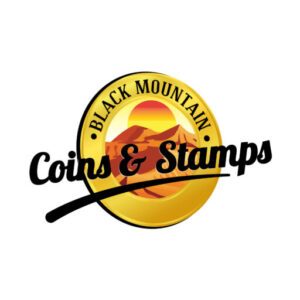The first Silver Dollar in the United States was authorized by Congress in 1792. The first of these dollars, now known as the Flowing Hair Dollar, was issued in 1794 until 1795. Several different issues followed after, including the Draped Bust Dollar, the Liberty Seated Dollar and the Trade Dollar. As far as design went, most of these coins shared the same theme; a depiction of Liberty on the obverse with an bald eagle on the reverse. Of these designs the one that became the most prolific is the Morgan Dollar. Named for it’s engraver George. T. Morgan, the Morgan Silver Dollar was issued from 1878 until 1904. It weighed 26.73 grams and was composed of .900 silver and .100 copper. Mintage briefly resumed in 1921 before it was replaced by the Peace Dollar. The Peace Dollar had the same specifications as the Morgan and was designed by Anthony de Francisci. The Peace Dollar was minted from 1921 to 1928, and then again briefly in 1934-35. The U.S. Mint did not produce another dollar coin again until 1971, when it issued the Eisenhower Dollar. Eisenhower Dollars, also referred to as “Ikes” like their namesake, were issued from 1971 until 1978. Only certain issues of the Ike Dollar contained silver, and even then their composition was only 40% silver. These 40% silver coins are available under the “Blue Ike” and “Brown Ike” listings.
Rainbow-Toned 1883-O Morgan Dollar MS66+
$1,649.99This piece has been graded by PCGS as MS 66+ and is identified with the serial number 7146.66+/25673149
ass=”pagetitle”>Rainbow-Toned Morgan Dollars…
An 1881-S Morgan Dollar graded PCGS MS67+ and bearing a price guide value of $1,100 realized $19,387… A PCGS MS65 1885-O in MS65 with a price guide listing of $250 brought $8,812.50. It’s not inflation! The drama of the prices at the recent Central States Numismatic Society Convention in Illinois was matched only by the dazzle of the coins themselves. Colorfully toned Morgan Dollars, with surfaces oxidized just enough to radiate an electrified, oversaturated version of the polychromatic patination of a fine silverware set long untouched, have always catalyzed heart rates and bidder paddles.
“Rainbow” toning can arise from prolonged exposure to any of a multitude of reactive environments. Wayne Miller’s Morgan and Peace Dollar Textbook, the authoritative reference on the series, includes several color plates illustrating spectacular examples. The most vividly hued Morgan Dollars, like the 1883-O pictured above, are those which were toned as a result of being stored in the sulfur-rich canvas bags (each containing 1,000 pieces) used by the United States Mint. The enormous outputs demanded by the Bland-Allison Act resulted in large quantities of coins – most notably San Francisco issues from the early years of the series – remaining untouched in government vaults for decades. The release of the Continental Bank Hoard in 1982 spurred interest by bringing many choice pieces to the market. The “textile” pattern seen on the face of some pieces mirrors the thickly woven fabric of the bag.
More complex, geometric patterns arise from long-term storage against the folded, sulfur-rich ends of a paper coin roll. A PCGS MS66+ 1888-O was famously featured on the poster for a Mid-America Coin Auctions sale in 1988. In 2014, it realized $20,562.50, still a record price for any example of the date. – By Kyle Clifford Knapp – August 1, 2022 – PCGS

 See All U.S Coins
See All U.S Coins